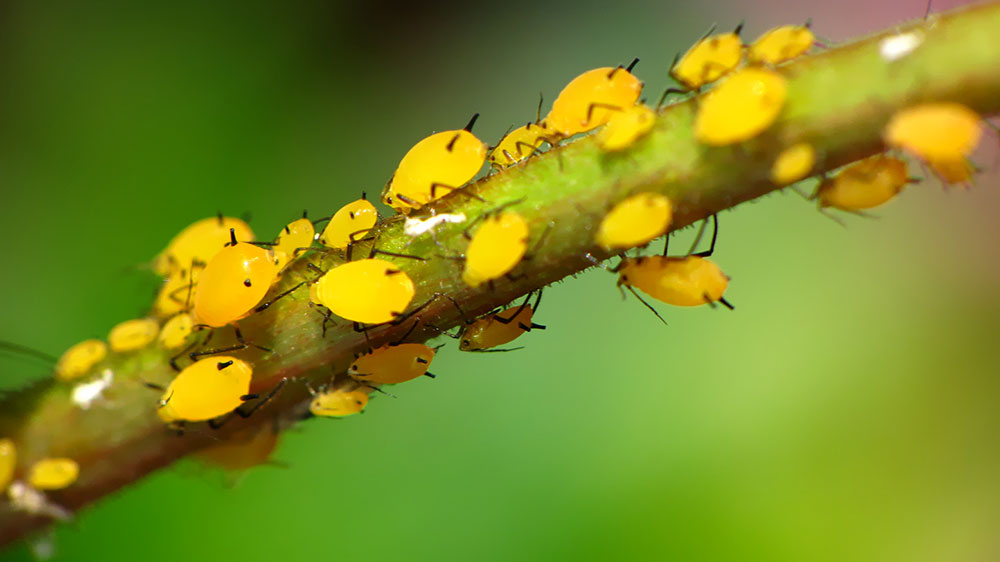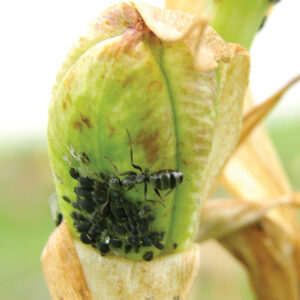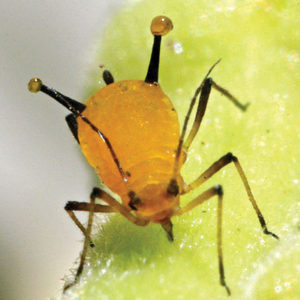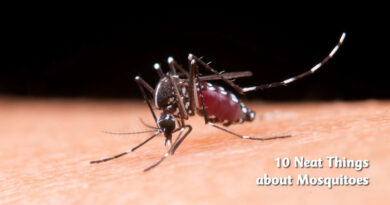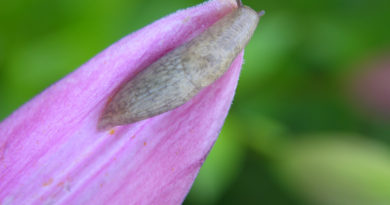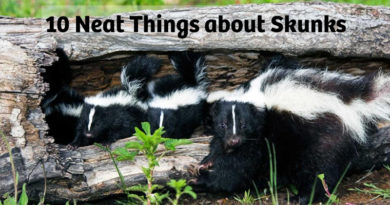Garden Enemy Number One: Aphids
We think of aphids as more pesky than dangerous in the garden but they do untold billions of dollars’ worth of damage to commercial food crops. Learning more about them will help you cope in your own home garden.
Aphids are enemy Number One in the temperate zone garden. If you never have another pest, you can almost rest assured that aphids will infiltrate no matter what your defences. Understanding them and how they roll is one of the keys to keeping these suckers to a minimum.
You probably know that they can reproduce both sexually and asexually, meaning the females, born of over-wintered eggs in cold climates, can produce offspring without the aid of a male in springtime. They just push out little clones of themselves, also female; in some cases the body of the newly emerged nymph is already bearing an incipient offspring. Come fall, triggered by light and temperature, the females will begin to produce sexual nymphs, both male and female, sometimes born without eyes or wings but with reproductive organs that allow them to produce eggs that will overwinter in the nooks and crannies of trees and shrubs.
It’s not that aphids are that short-lived – a generation can live for 20 to 24 days. In one season, some species can produce as many as 41 generations. Under ideal conditions, it is estimated that a single cabbage aphid could start a dynasty that will grow to 1,560,000,000,000,000,000,000,000 offspring in a single season. Fortunately those perfect conditions seldom occur.
Suck and flow
We think of aphids as sucking insects and they do act as suckers on occasion, but mostly they simply stick their needle-like mouth parts into the phloem of a plant and let the sap flow – well, actually, it veritably gushes into their mouth parts and through their digestive tract, coming out the other end as honey dew.
The sucking part happens when they tap into the xylem sap of the plant. The xylem cells transport water and minerals upward on the plant. This sap contains only 10 per cent as much carbohydrate and amino acids as the phloem sap, which transports recently manufactured sugars to parts of the plant, including the roots that need them. So why do the aphids go to all this trouble? Some think it is to balance their moisture content, but others believe that it has something to do with their ability to reproduce. Still others say it reduces the osmotic pressures caused by the phloem sap gushing into their stomachs.
Among the 4,400 species in 10 families of aphids, there is an aphid for every plant. Sometimes aphids specialize with just one plant on their menu; sometimes they alternate between plants, often starting off on trees and shrubs in springtime and moving on to herbaceous plants as they grow. Sometimes, as with the green peach aphid, they are not fussy at all and will latch onto just about any plant.
Aphids come in sizes ranging from one millimetre long to 10 millimetres long, and in colours that include green, brown, black, pink, grey, red and transparent.
Vulnerabilities, enemies and your defences
Aphids are vulnerable to late frosts, excessive heat, and pounding rain (and your garden hose). The rain or hose knocks them off their perch and stops them from flying.
Their enemies include ladybugs, hoverfly larvae, parasitic wasps, certain caterpillars, aphid midge larvae, crab spiders, lace wings, certain types of fungus on certain types of aphids – and, of course, hose-wielding humans.
They are sensitive to neem oil and lantana products and to garlic mixtures as well as insecticidal soaps. Some gardeners swear by diatomaceous earth as a cure and a prevention (you can safely mix it with water and spray the leaves, top and bottom).
Spraying trees and shrubs with dormant oil in spring suffocates overwintering eggs. Banding trees with Tanglefoot and insulation will help keep aphid-herding ants away. Washing trees in early spring and summer can also help dislodge first the eggs and then the nymphs and adults before they move on to your plants.

